| Vintage Pulp | Oct 9 2023 |

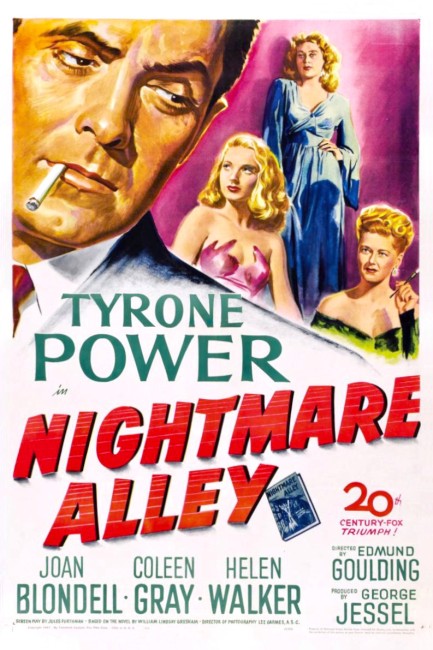
| Vintage Pulp | Mar 16 2021 |

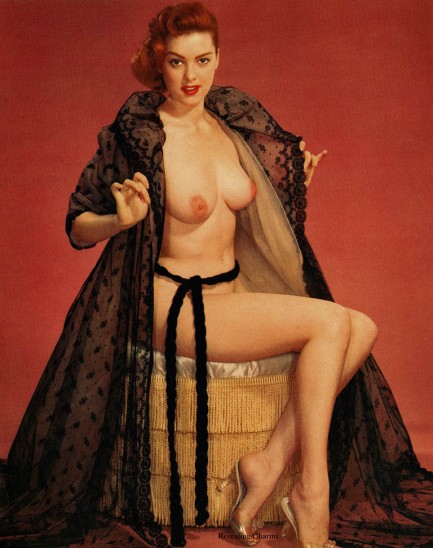
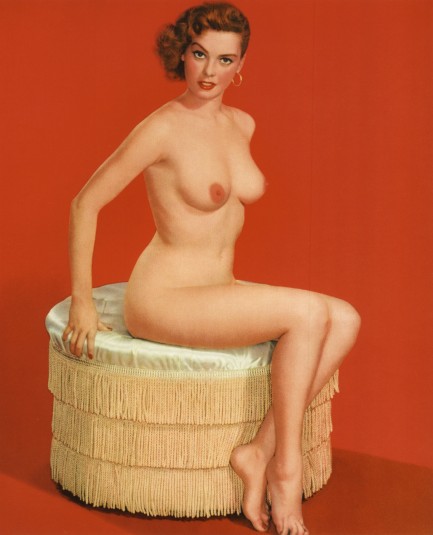
That's what's called an old fashioned publicity stunt and as far as we know stuff like that doesn't happen these days. De Lee also popped up in the press when famed Hungarian sculptor Sepy Dobronyi said she had a perfectly formed body, so it's possible she modeled for him at some point. She obviously sought stardom, but her only movie role was a minor appearance as a stripper in the b-drama Hell Bound. Whatever fame she has these days mainly derives from the many collectible Technicolor lithographs in which she and that quirky right eyebrow of hers were featured. We showed you a few lithos already, and we have one or two more sitting around. You may see them later.
| Intl. Notebook | Oct 12 2020 |

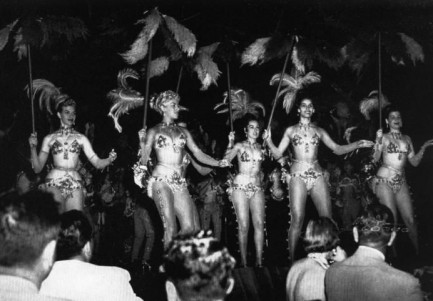
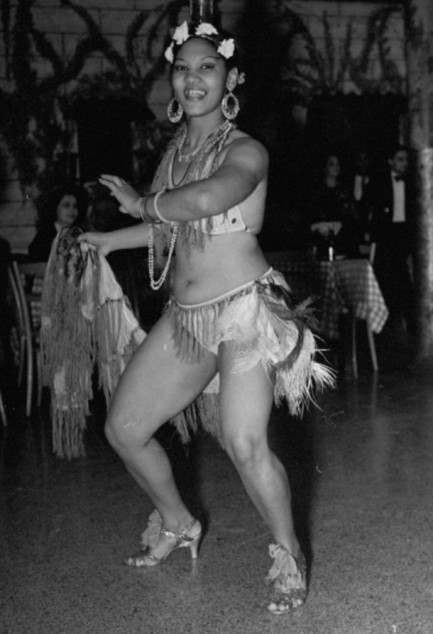 as a great place to go for thrills. During the 1980s, Ibiza or Mykonos. The 90s, Thailand or Goa. The 00s, Tulum. Havana wasn't unusual in terms of what it offered. Bigger, yes. More convenient for Americans, for sure. But numerous far flung locales have served as paradises for foreign visitors to lose themselves and get crazy.
as a great place to go for thrills. During the 1980s, Ibiza or Mykonos. The 90s, Thailand or Goa. The 00s, Tulum. Havana wasn't unusual in terms of what it offered. Bigger, yes. More convenient for Americans, for sure. But numerous far flung locales have served as paradises for foreign visitors to lose themselves and get crazy.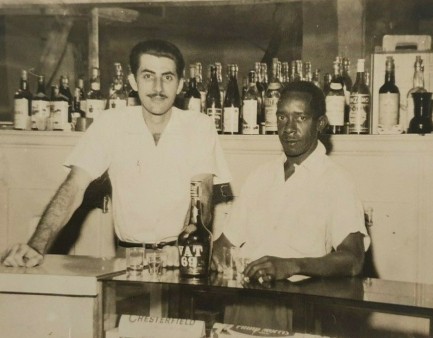 type of expatriate experience. It's unavoidable. A friend of ours lived in a stick shack on Cayos Cochinos for an entire year and he was still considered a rich foreigner. Everyone knows you have a choice. The Americans who partied in Cuba could never have been anything but wealthy invaders, no matter the reality of their finances, or the inclusiveness their sensibilities.
type of expatriate experience. It's unavoidable. A friend of ours lived in a stick shack on Cayos Cochinos for an entire year and he was still considered a rich foreigner. Everyone knows you have a choice. The Americans who partied in Cuba could never have been anything but wealthy invaders, no matter the reality of their finances, or the inclusiveness their sensibilities.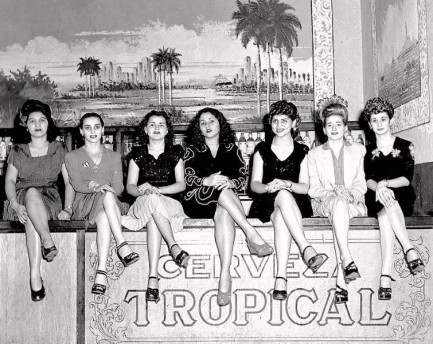 look at Havana partying shots we don't quite see oblivious, entitled people, because we know it isn't that simple. Most of them knew what was percolating. Stability was diminishing fast. There was a dissolved parliament, large protests, a 1953 battle in Santiago de Cuba, and other signposts on the way to change. It was clear the fun could never last.
look at Havana partying shots we don't quite see oblivious, entitled people, because we know it isn't that simple. Most of them knew what was percolating. Stability was diminishing fast. There was a dissolved parliament, large protests, a 1953 battle in Santiago de Cuba, and other signposts on the way to change. It was clear the fun could never last.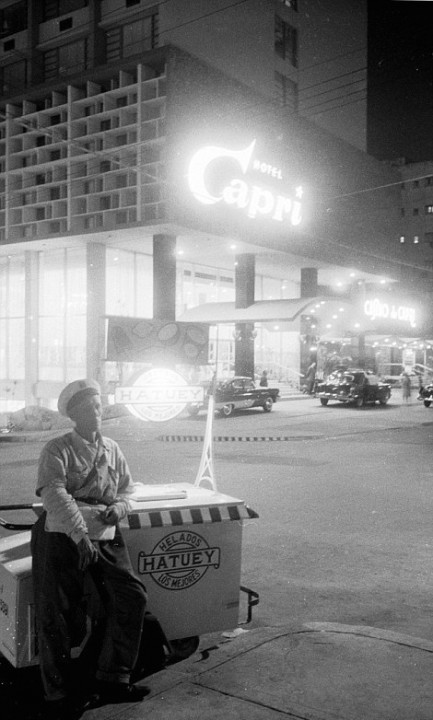 An ice cream vendor patiently waits for potential customers to emerge from the Capri Hotel and Casino, 1958.
An ice cream vendor patiently waits for potential customers to emerge from the Capri Hotel and Casino, 1958.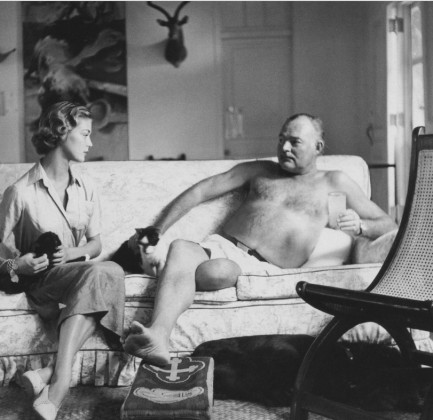 Fashion model Jean Patchett and author Ernest Hemingway, who habitually went shirtless, lounge at Finca Vigia, his house in Cuba, 1950.
Fashion model Jean Patchett and author Ernest Hemingway, who habitually went shirtless, lounge at Finca Vigia, his house in Cuba, 1950.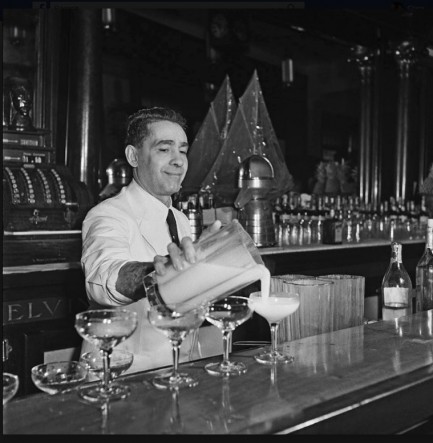 Above, Constantino Ribalaigua Vert, the "Cocktail King of Havana," inventor of the Papa Doble daiquiri, and owner of the famed bar La Floridita.
Above, Constantino Ribalaigua Vert, the "Cocktail King of Havana," inventor of the Papa Doble daiquiri, and owner of the famed bar La Floridita.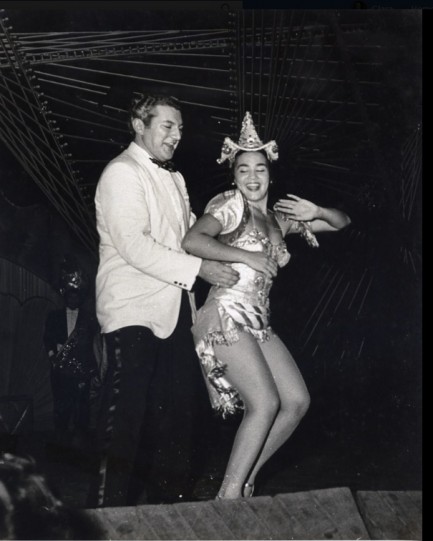
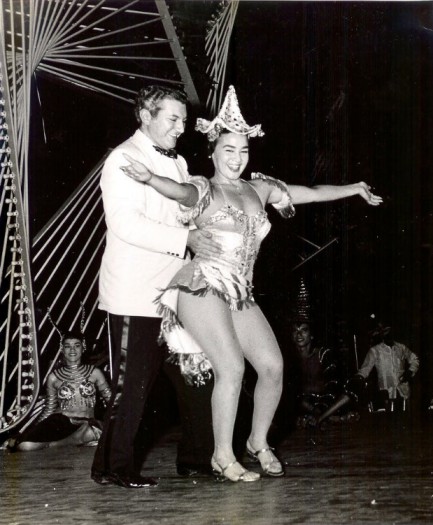 Liberace performs on stage at the Tropicana with headline dancer Ana Gloria Varona, 1954.
Liberace performs on stage at the Tropicana with headline dancer Ana Gloria Varona, 1954.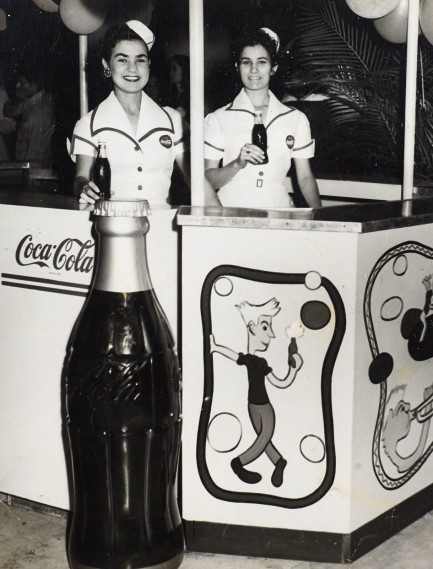 A Coke and a smile from two soft drink vendors.
A Coke and a smile from two soft drink vendors.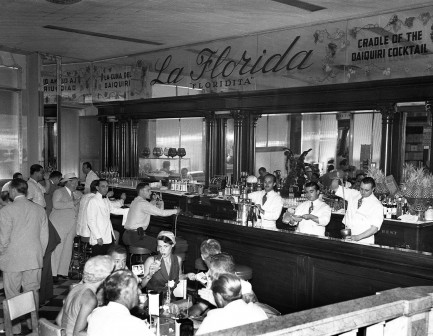 Patrons enjoy drinks at La Floridita, 1955.
Patrons enjoy drinks at La Floridita, 1955.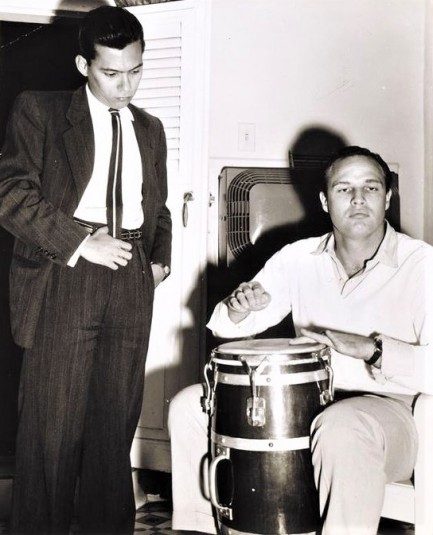 Cuban writer Guillermo Cabrera Infante stands by while Marlon Brando tries his hand—or both of them—at the conga drum at Hotel Packard, 1956.
Cuban writer Guillermo Cabrera Infante stands by while Marlon Brando tries his hand—or both of them—at the conga drum at Hotel Packard, 1956.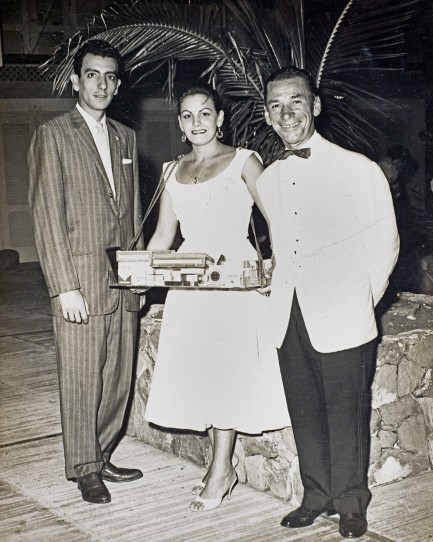 Mafia kingpin Meyer Lansky, on the right in this shot, attends the opening of the Hotel Riviera in December 1957.
Mafia kingpin Meyer Lansky, on the right in this shot, attends the opening of the Hotel Riviera in December 1957.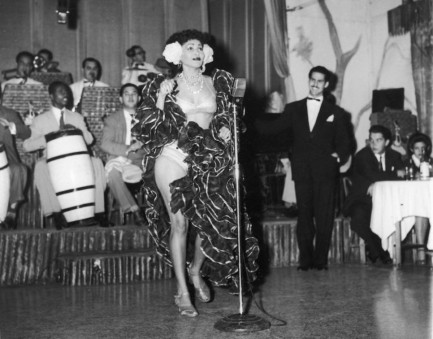 Famed entertainer Zulema dances the rhumba at the Zombie Club, 1946.
Famed entertainer Zulema dances the rhumba at the Zombie Club, 1946.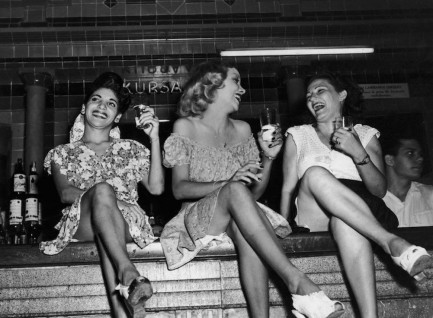 Three women liven up the room from their perch on the bar at Cabaret Kursal.
Three women liven up the room from their perch on the bar at Cabaret Kursal.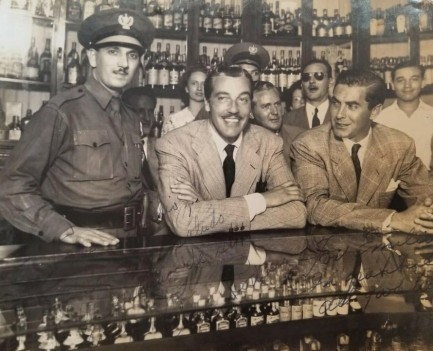 Cesar Romero and Tyrone Power enjoy a drink and a chat at Sloppy Joe's Bar.
Cesar Romero and Tyrone Power enjoy a drink and a chat at Sloppy Joe's Bar.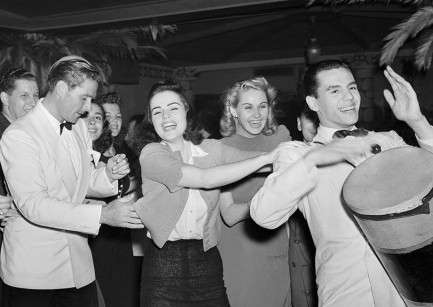 Revelers including Errol Flynn and Desi Arnaz, Jr. form a conga line during the Yoruba festival known as Dia de Babalú-Ayé.
Revelers including Errol Flynn and Desi Arnaz, Jr. form a conga line during the Yoruba festival known as Dia de Babalú-Ayé.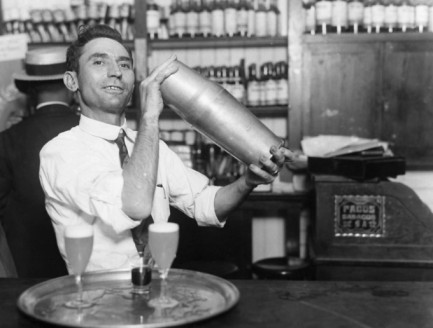 José Abeal Otero, founder of Sloppy Joe's Bar, mixes up a giant batch of liquid magic. No, this isn't the same person as above, Ribalaigua. They were both small, dapper guys.
José Abeal Otero, founder of Sloppy Joe's Bar, mixes up a giant batch of liquid magic. No, this isn't the same person as above, Ribalaigua. They were both small, dapper guys.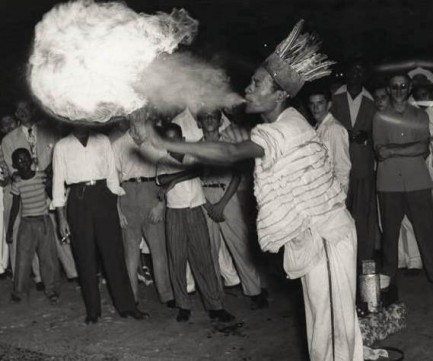 A firebreather thrills onlookers in front of the Saratoga Hotel, 1949.
A firebreather thrills onlookers in front of the Saratoga Hotel, 1949.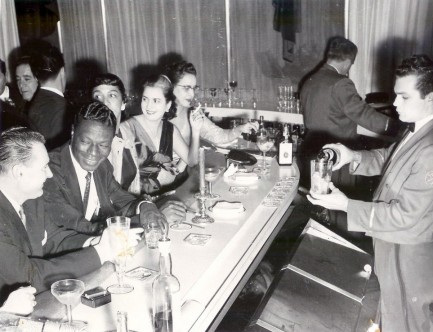 This photo shows Nat King Cole and his wife Maria Cole, along with Martin Fox, who was the owner of the Tropicana, accompanied by his wife Ofelia and an unknown fifth party.
This photo shows Nat King Cole and his wife Maria Cole, along with Martin Fox, who was the owner of the Tropicana, accompanied by his wife Ofelia and an unknown fifth party.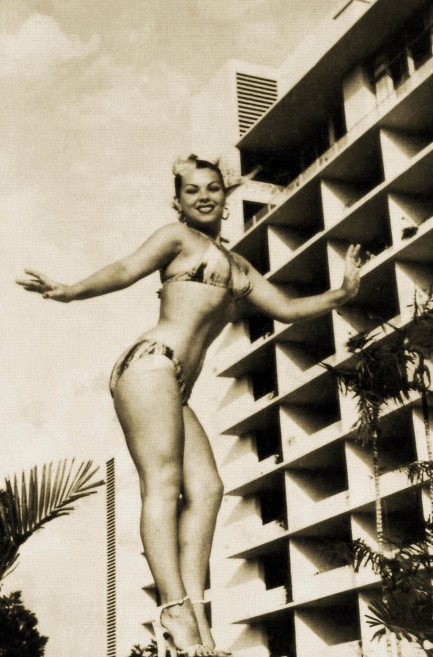 U.S. born vedette and movie star Tongolele, aka Yolanda Montes, poses outside the Capri Hotel and Casino, 1958.
U.S. born vedette and movie star Tongolele, aka Yolanda Montes, poses outside the Capri Hotel and Casino, 1958.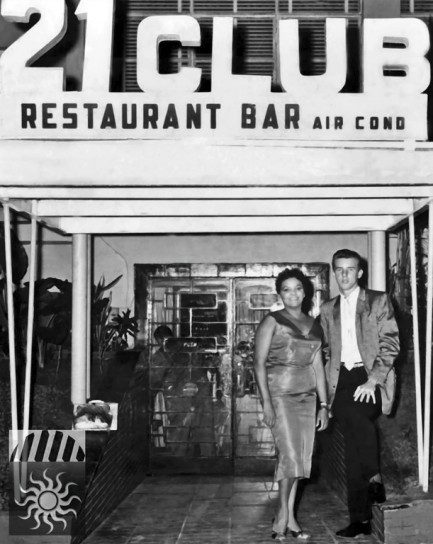 Meme Solis and Elena Burke pose at the entrance to the 21 Club, located in the Capri Hotel.
Meme Solis and Elena Burke pose at the entrance to the 21 Club, located in the Capri Hotel.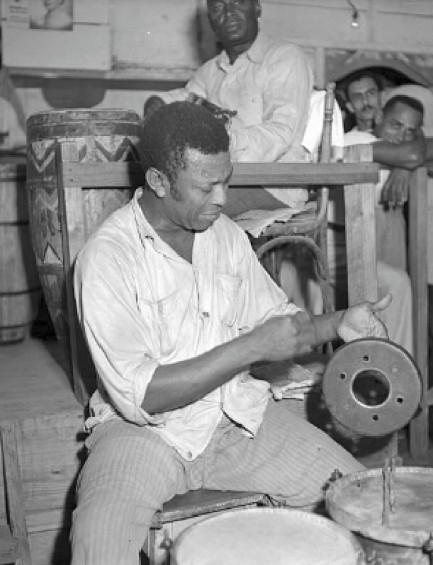
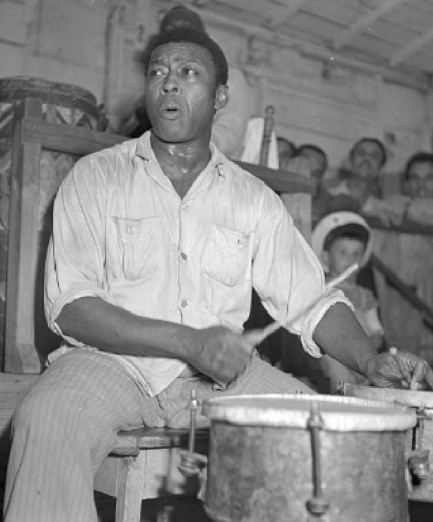 These photos show Silvano Chueg Echevarría, a master of percussion and an iconic musical personage. Let's go back to that Marlon Brando photo for a sec. Brando was an aficionado of percussive instruments. During that 1956 jaunt to Cuba he made it known that he wanted to buy drums from real percussionists. One of the musicians he met was Echevarría. All the Havana percussionists knew of Brando, of course, but thought he was a musical dilettante. At some point he finagled his way onto a nightclub stage, sat in with a band, and truly amazed onlookers with his ability on the conga. He wasn't a master, but he was pretty good. He won respect, and bought his drums.
These photos show Silvano Chueg Echevarría, a master of percussion and an iconic musical personage. Let's go back to that Marlon Brando photo for a sec. Brando was an aficionado of percussive instruments. During that 1956 jaunt to Cuba he made it known that he wanted to buy drums from real percussionists. One of the musicians he met was Echevarría. All the Havana percussionists knew of Brando, of course, but thought he was a musical dilettante. At some point he finagled his way onto a nightclub stage, sat in with a band, and truly amazed onlookers with his ability on the conga. He wasn't a master, but he was pretty good. He won respect, and bought his drums.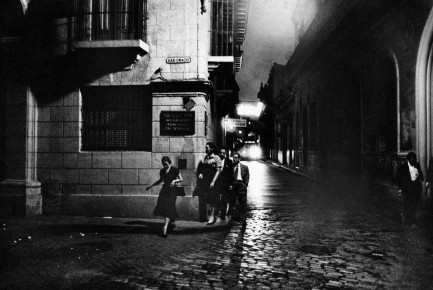 Raquel Revuelta, Manuel Corrales, and Mariano Rodriguez leave the famed bar Bodeguita del Medio and walk through the Havana night to other locales, other adventures, 1958.
Raquel Revuelta, Manuel Corrales, and Mariano Rodriguez leave the famed bar Bodeguita del Medio and walk through the Havana night to other locales, other adventures, 1958.| Vintage Pulp | Aug 28 2018 |

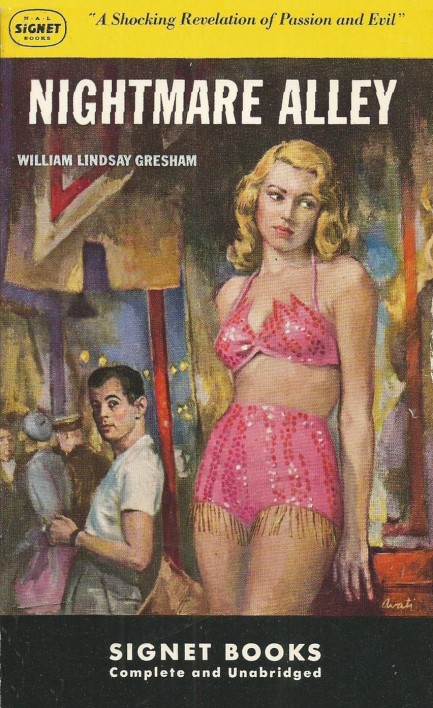
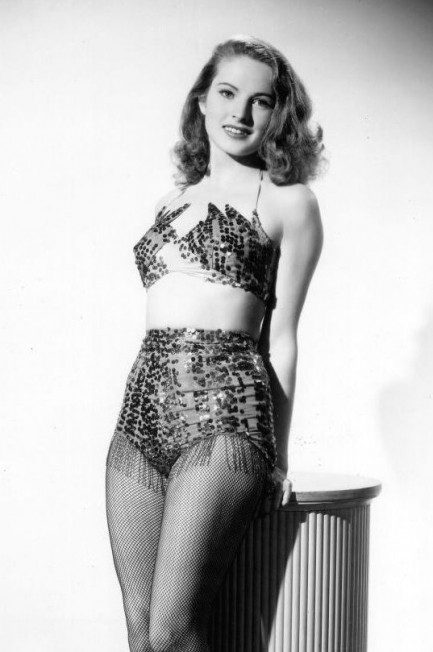 Above, a nice James Avati cover for Nightmare Alley by William Lindsay Gresham, copyright 1949. The hardback of this came out in 1946, and it was adapted to the big screen in 1947 with Tyrone Power in the lead role, so this art reflects the movie, which is why the cover femme looks like and is dressed like co-star Coleen Gray. This is one of many mid-century novels set in and around carnivals, and it's one of the better ones, we think. The film version adheres reasonably close to Gresham's original vision. We talked about it several years ago, so check here if you're interested. We've also talked about several other carnival books over the years and now we have an idea to put together a cover collection along those lines. We'll have to see if there are any examples left to find. But in the meantime you can see what we've already collected here, here, here, and here.
Above, a nice James Avati cover for Nightmare Alley by William Lindsay Gresham, copyright 1949. The hardback of this came out in 1946, and it was adapted to the big screen in 1947 with Tyrone Power in the lead role, so this art reflects the movie, which is why the cover femme looks like and is dressed like co-star Coleen Gray. This is one of many mid-century novels set in and around carnivals, and it's one of the better ones, we think. The film version adheres reasonably close to Gresham's original vision. We talked about it several years ago, so check here if you're interested. We've also talked about several other carnival books over the years and now we have an idea to put together a cover collection along those lines. We'll have to see if there are any examples left to find. But in the meantime you can see what we've already collected here, here, here, and here.| Vintage Pulp | Feb 18 2014 |

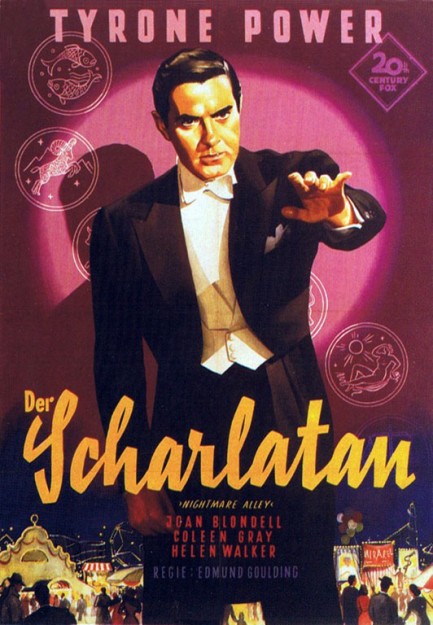
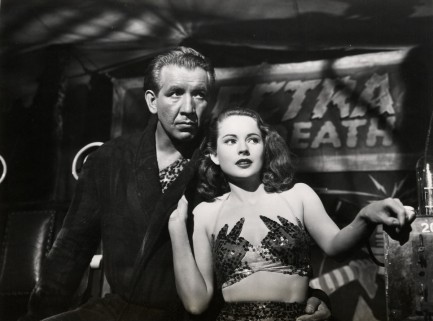
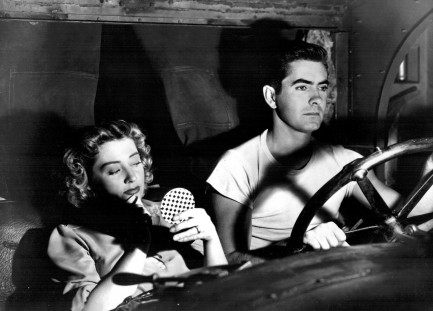
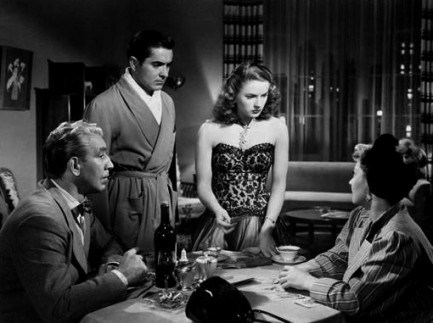
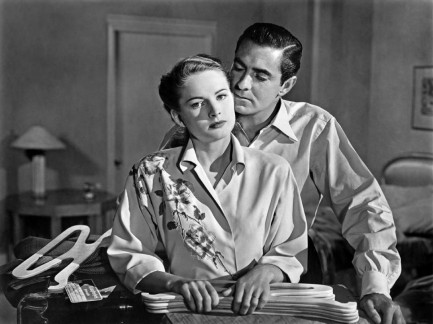
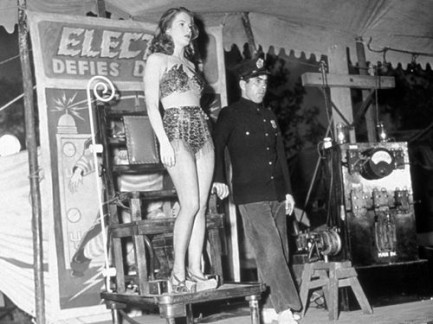
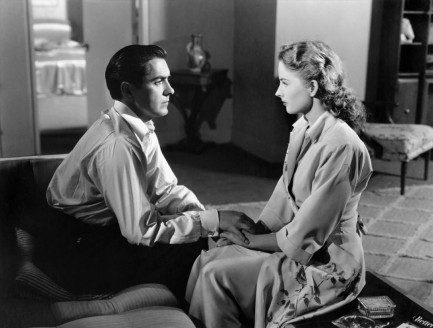
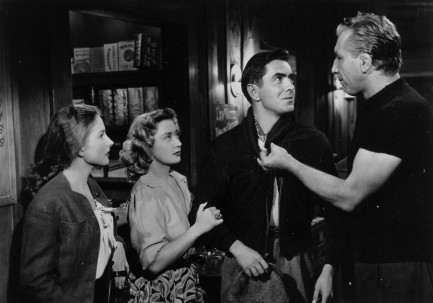 and cruelty, and movies that depict them must be judged on their own terms. So ignore the haters—Nightmare Alley is excellent. Power puts on an award-worthy performance, and Joan Blondell and Coleen Gray are great in support. There’s a pivotal moment in the film when it seems possible Power’s character has some actual psychic ability. Too bad he can’t see his own future. Nightmare Alley premiered in 1947, and finally made its way to West Germany today in 1954.
and cruelty, and movies that depict them must be judged on their own terms. So ignore the haters—Nightmare Alley is excellent. Power puts on an award-worthy performance, and Joan Blondell and Coleen Gray are great in support. There’s a pivotal moment in the film when it seems possible Power’s character has some actual psychic ability. Too bad he can’t see his own future. Nightmare Alley premiered in 1947, and finally made its way to West Germany today in 1954. | Intl. Notebook | Oct 16 2011 |

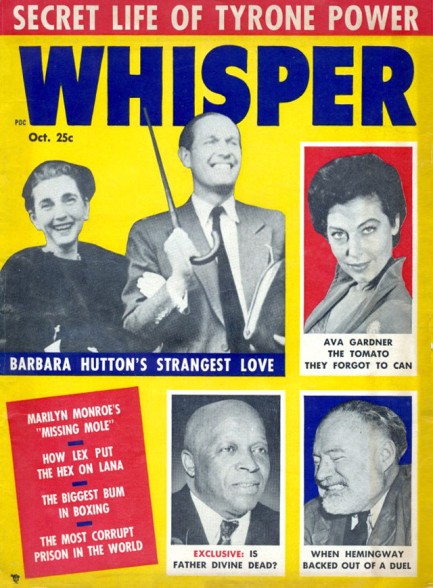
This Whisper from October 1955 examines Ava Gardner’s love life, Ernest Hemingway’s courage, and Marilyn Monroe’s mole, all of which, while worthwhile subjects, are less interesting to us than the piece on Father Divine. Who was Father Divine? Well, he was a preacher who claimed to be God and had as many as two million followers during his heyday in the 1930s. Of course, that number depends on where you do your research. Some sources try to distinguish between “true followers” and sympathizers who attended his rallies, but that’s like saying seventy percent of the people at a rock concert aren’t true fans. Attendance at events is an accepted method for determining popularity, and considering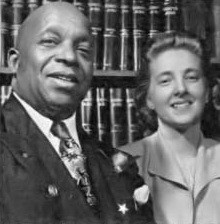 the fact that Father Divine had verifiable rallies in places as far away as Switzerland and Australia, we think the two million figure is accurate.
the fact that Father Divine had verifiable rallies in places as far away as Switzerland and Australia, we think the two million figure is accurate.
Why was he so popular? Hard to say. Charisma and an imaginative doctrine are givens. But it was national exposure that really helped swell the ranks of his followers. From the point of view of a typical magazine editor, you eventually can’t resist writing at least a blurb about a person who claims to be God. When that person proves to be polished and intelligent, and his belief system more nuanced than suspected, the article becomes its own public relations. Thanks to steady press coverage, what started as a local congregation in Brooklyn, New York eventually spread to become a multi-ethnic and pan-national movement. But with popularity came scandals. The most notorious of these was when a Divine follower named John Hunt, a California millionaire who had dubbed himself John the Revelator, kidnapped a 17-year-old girl named Delight Jewett and repeatedly had sex with her, either before or after brainwashing her into thinking she was to be the “mother of the new redeemer of the world,” i.e., a new Virgin Mary.
Father Divine’s ministry survived the Hunt scandal and others, and in fact only began to shrink as Divine himself aged and became less active. The cover of Whisper asks if he is dead. Fair question—he was pushing eighty by then and hadn’t been seen in public for months. But he would resurface weeks later in a flurry of press coverage, pronouncing himself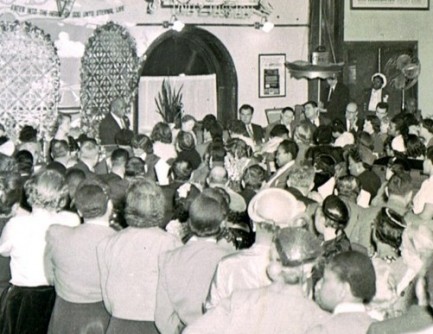
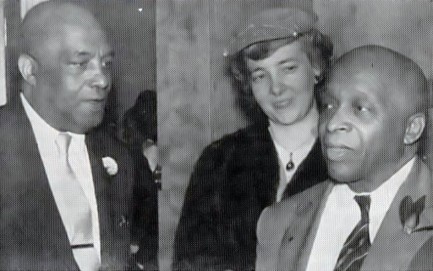 “healthy in every organ, muscle, sinew, joint, limb, vein and bone, and even in every atom, fiber and cell of my bodily form.” But Divine was in fact in declining health and had been for some time. Ten years later he died of natural causes at the age of (because his exact birth date is unknown) eighty-nine or ninety. Or he left behind his corporeal form and permanently inhabited his spiritual one. Depending on whom you ask.
“healthy in every organ, muscle, sinew, joint, limb, vein and bone, and even in every atom, fiber and cell of my bodily form.” But Divine was in fact in declining health and had been for some time. Ten years later he died of natural causes at the age of (because his exact birth date is unknown) eighty-nine or ninety. Or he left behind his corporeal form and permanently inhabited his spiritual one. Depending on whom you ask.
| Vintage Pulp | Aug 24 2011 |

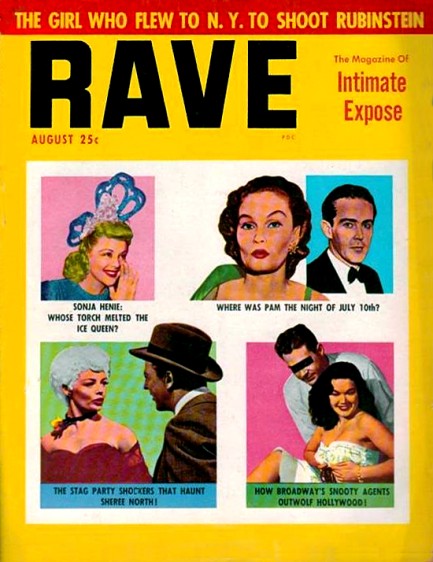
Rave, for which you see a cover above, was a low budget U.S.-based magazine that launched in 1953 as a celeb publication, quickly moved into scandal and gossip, but didn’t survive beyond 1956, as far as we can tell. The graphic design was revamped twice, and so we suspect it just never found its niche in a crowded tabloid market. But it wasn’t for lack of providing celebrity rumormongers what they craved. This August 1955 issue discusses Serge Rubinstein’s murder, Anita Ekberg’s bombshell status, Jackie Gleason and more, but of special note are two stories: one about Sonja Henie, and another about Sheree North.
Sheree North, not well known today, was a dancer-turned-actress who in the mid-1950s was groomed (like so many other women) as the next Marilyn Monroe. She even made the cover of Life with the caption: “Sheree North Takes Over from Marilyn Monroe.” But it didn’t happen. Though North had a couple of hit films, her on-deck status was quickly usurped by another bottled blonde named Jayne Mansfield. North had done some burlesque early in her career, and Rave claims she had a few stag reels floating around. We don’t know about that, but there was a 1951 clip called the “Tiger Dance” that certainly pushed the bounds of contemporary sexiness. We found an upload of it, and you can see it here.
The story on Sonja Henie is a bit more interesting. A Norwegian-born world and Olympic champion figure skater, Henie shot to international fame at age fourteen and turned that recognition into a Hollywood career. She became extremely popular as a screen star, and the same drive that sparked that success fueled her personal life. She married three times and had numerous affairs, including with Tyrone Power and allegedly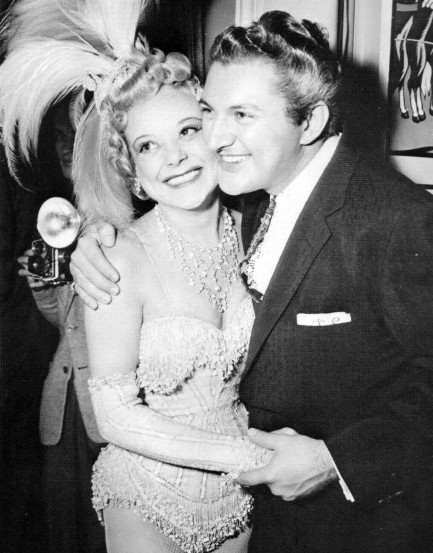 with champion boxer Joe Louis. But the mystery man Rave hints at on its cover is none other than piano player Liberace, just above. If you know anything about Liberace then you know his dates with Henie were just for show. But as a gay or bi celebrity—and both were designations he denied until his dying day—dating women would have been a completely understandable strategy to avoid being outed by the time's vicious tabloids and losing his musical career.
with champion boxer Joe Louis. But the mystery man Rave hints at on its cover is none other than piano player Liberace, just above. If you know anything about Liberace then you know his dates with Henie were just for show. But as a gay or bi celebrity—and both were designations he denied until his dying day—dating women would have been a completely understandable strategy to avoid being outed by the time's vicious tabloids and losing his musical career.
Henie, on the other hand, rarely let controversy get in the way of her decisions if she thought the result would ultimately be a net gain. This is possibly why she publicly greeted Adolf Hitler with a Nazi salute at a Berlin exposition in 1936, and why she sought Joseph Goebbels’ help in distributing one of her films in Germany. Yet you have to assume that anyone who would hang out with and possibly sleep with Joe Louis didn’t have rock solid racist views. But as millions died, her behavior can only be seen as shameful. However she returned to Norway with Holiday on Ice in 1953 and again the year Rave published the above cover and was warmly greeted, if not quite totally forgiven. Henie died of cancer in 1969, but as another fascinating product of a complex time, we suspect her name will come up on this website again.




































































